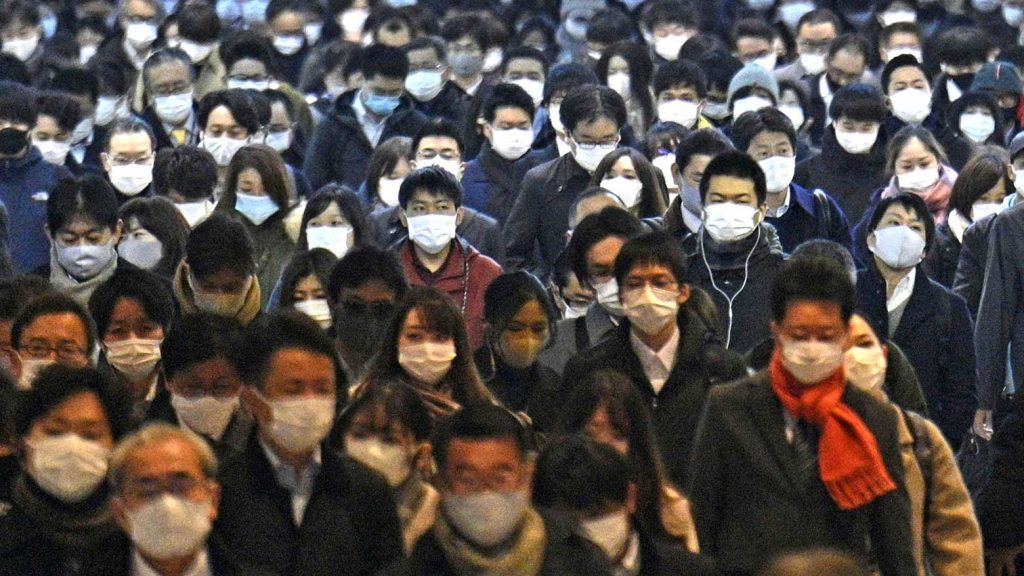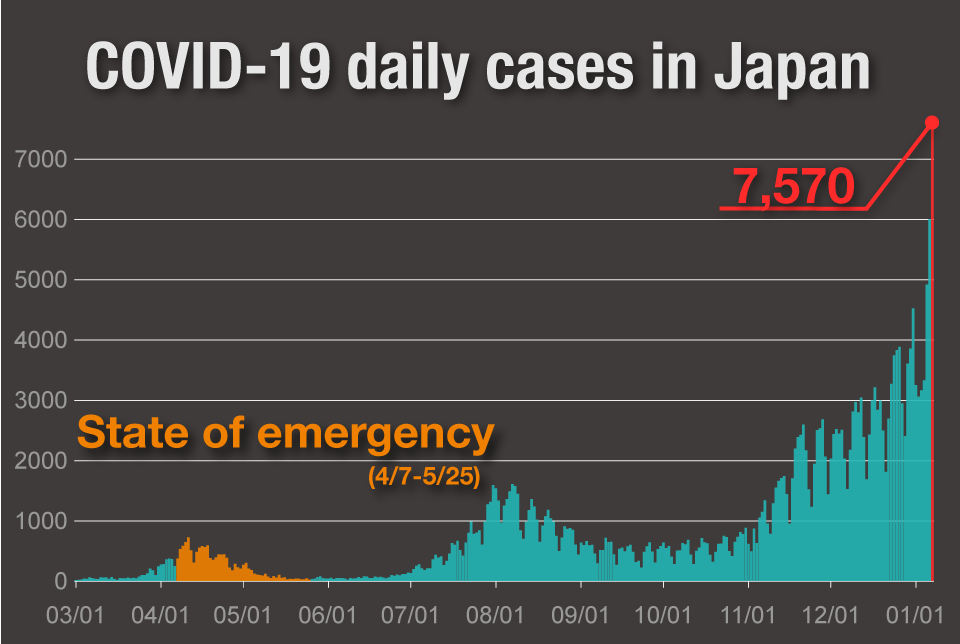
- Japan on Thursday declared a second state of emergency in the Tokyo region to help contain the virus.
- The declaration covers Tokyo and the prefectures of Kanagawa, Saitama and Chiba. It will remain in place until February 7.
- The nationwide number reached a record 7,570. About half of those cases were in the Tokyo area, including a record 2,447 in the capital itself.
- The government has however said that it will help prefectural governments compensate establishments that comply with the shorter hours
- The governors of Osaka, Hyogo and Kyoto prefectures in western Japan are considering asking the central government to add them to the state of emergency.
Japanese Prime Minister Suga Yoshihide at a news conference on Thursday declared a second state of emergency in the Tokyo region to help contain the virus. “The rapid spread of COVID-19 across the country has created a situation that could have a serious impact on people’s lives and the economy”, he said.
Japanese health minister has said that this declaration is less expansive, but more intensive, than the one last April. The declaration covers Tokyo and the prefectures of Kanagawa, Saitama and Chiba. It will remain in place until February 7.
The declaration of emergency comes after a surge in the daily number of new cases. On Thursday, the nationwide number reached a record 7,570. About half of those cases were in the Tokyo area, including a record 2,447 in the capital itself.
The number of patients in serious condition in Tokyo has risen to a record 121. Experts on a panel assessing the situation say healthcare services in the capital will collapse if the numbers keep increasing at the current rate.
The deputy head of the Tokyo Medical Association, Inokuchi Masataka, says if the hospitalization rate remains unchanged, it may take less than two weeks for the number of patients to exceed the 4,000 beds secured by the metropolitan government for coronavirus treatment.
Bars and restaurants will be closed by 8 PM. Residents are to refrain from non-essential outings after 8 PM. Businesses that fail to comply without good reason will be named publicly.
The government has however said that it will help prefectural governments compensate establishments that comply with the shorter hours to make up for the loss they have to endure due to lockdown measures. It plans to cover about 80 percent of the handouts of up to 1.8 million yen, about $17,000 dollars, per month per venue.
As per a report in NHK, Hamada Atsuo, a professor at Tokyo Medical University and an expert on infectious diseases, says he is concerned that a second state of emergency won’t have the impact the first one had because people have gotten used to living under the pandemic. He says if the number of infections keeps rising for another two weeks, the authorities should consider measures beyond just restrictions on bar and restaurants.
The number of new infections is also rising outside the major urban areas. Osaka prefecture reported 600 new cases on Thursday, breaking a record set a day earlier. Aichi prefecture also had a record number of daily new cases Thursday with 431.
Japan’s worsening coronavirus situation

The Japanese health ministry data released on Friday showed that 47 prefectures have reached the critical stages on a series of indexes used to assess the coronavirus situation, including hospital bed availability. Tokyo, Hyogo, Osaka and Saitama are among the prefectures that have reached Stage 4, which is the most critical, and means the occupancy rate is 50 percent or more.
As of Tuesday, the rate was 78.1 percent in Tokyo, 70.1 percent in Hyogo, 64.4 percent in Osaka, and 59 percent in Saitama. Officials point out that Hyogo tends to log a higher rate because it hospitalizes everybody who tests positive, in principle. Regarding bed availability for seriously ill patients, Tokyo and Osaka have also reached Stage 4. Tokyo’s rate was 87.4 percent, and Osaka’s was 64.7 percent.
In the week through Sunday, the rate for positive PCR tests was 21.3 percent in Hyogo, 20.5 percent in Chiba, 16 percent in Kanagawa, 14.1 percent in Tokyo, 13.9 percent in Saitama, 11.2 percent in Kyoto, and 10 percent in Osaka. Officials say the rates may have been pushed up because fewer tests were conducted during the New Year period.
The governors of Osaka, Hyogo and Kyoto prefectures in western Japan are considering asking the central government to add them to the state of emergency.
